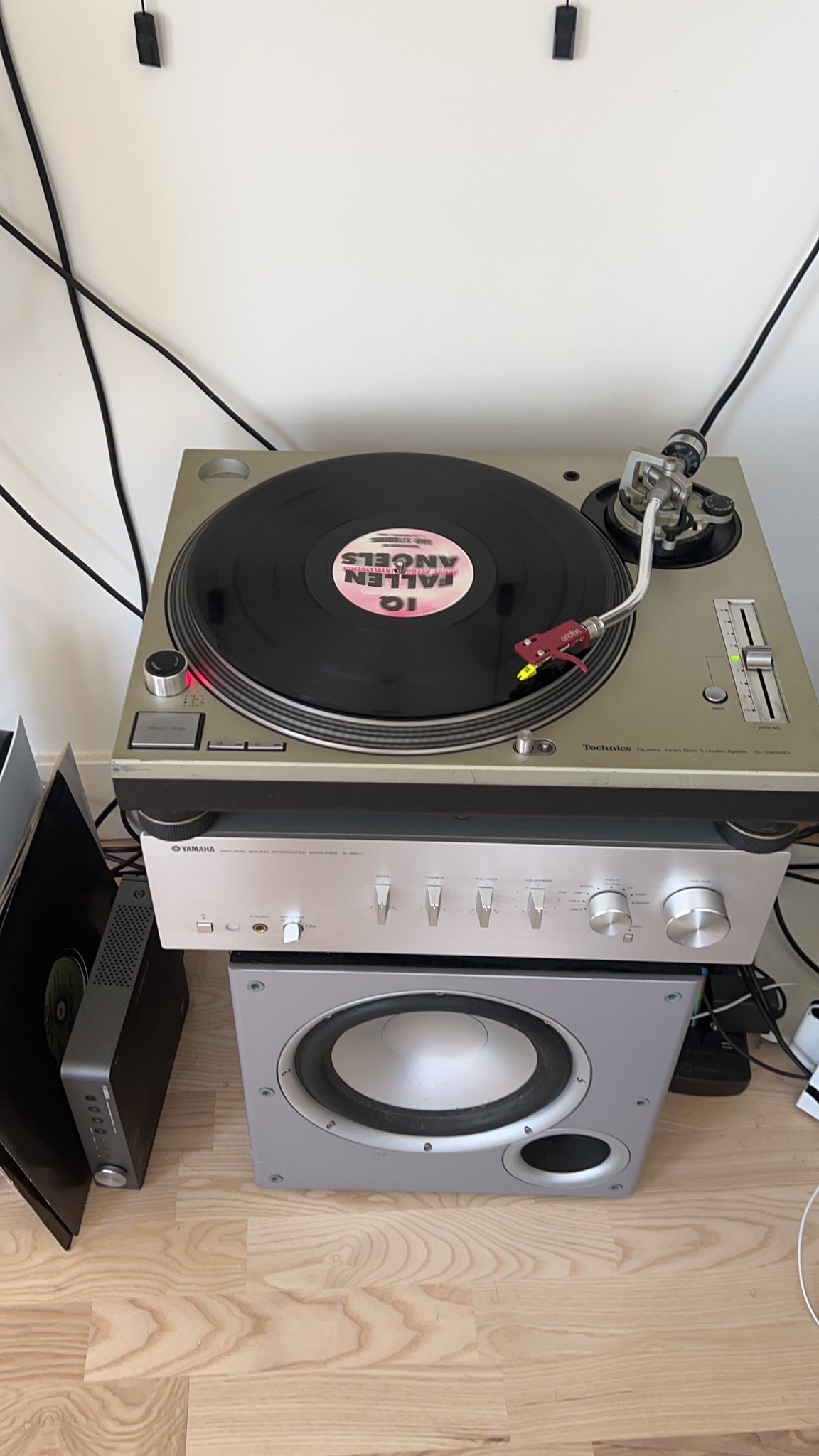ripping & processing vinyl
lately, i've been super into old 90s drum-and-bass (namely jungle) and have difficulty finding good copies of the songs i like online. aside from dubplates existing in invite-only communities, compilations and youtube videos are the only mediums for finding new tracks. getting good copies of music usually means ripping the cd, but many of these older jungle releases are only available on vinyl, with minimal quantity. the first step to getting a clean, crisp copy of a song i like is ordering it. so far, i've had varying (but positive) success with discogs. most of the releases i'm after are coming from the uk, so shipping time usually includes the seller processing time + customs. they mostly arrive in under four weeks and, at the best, one week.
once i have the record, the next step is getting the signal off of the plate. remember that vinyl is an analog audio medium; there are no 1s and 0s. we need to pass this signal through an analog to digital converter. converter is the technical name for the devices because they (try their best to) convert analog signal into digital samples and convert digital samples into an analog signal for playback on listening devices. remember, speaker mediums are diaphragms, and an analog signal usually drives their movement. in my case, i use a focusrite scarlett 18i20 (but i'm eyeing up the rme fireface ufx ii if anyone with a fat wallet wants to gift me something.)
having an audio interface is cool, but how do we go from record to digital samples on my computer? first, we must find a playback medium (a turntable/record player). my dad is an even bigger audio nerd than me and is, among many other things, a dj (disc jockey, if you didn't know), and he happened to have an extra turntable i could borrow. if you're looking for a good direct drive (the platter the record sits on is connected directly to the motor, as opposed to belt-driven turntables), then the technics sl-1200 series is excellent. i have an sl-1200 m3d (older than me!) even with just the record on the turntable, we need a way to interpret the signal. now is where the needle comes in. i'm still not 100% on the makeup of the actual pickup, but most come in two parts, the cartridge and the stylus. the stylus is the actual needle that moves along the record's grooves, and the cartridge is the housing that the stylus sits inside. it's crucial to balance the needle so that there isn't any drift and that it's weighted correctly for smooth playback.
just because we have the needle on the record doesn't mean we get a good signal. the music is far too quiet, and we need an amplifier to boost the signal to audible levels directly out of the turntable. i use the yamaha a-s501 with the pure direct option on (to bypass any of the settings on the amplifier.) now that we have a signal coming into our interface, we can use any recording program to get a file full of digital samples. i use logic pro, but there isn't any difference between that and audacity aside from processing with plugins. now that we are recording, we can place the needle on the record and hit play! my interface also allows me to monitor the analog signal in real-time, so usually, i switch over to give myself something to do while it records. after the recording completes, it's up to me to splice the track for the beginning, end, and post-process.
i've heard vinyl rips with zero post-processing and some with a ton, but i like to keep it simple. i use izotope rx 9 to remove clicks and other annoyances from the signal. remember, these records are usually ~10 years older than me, so they aren't in the best condition. the best i can do to fight against a poor signal is clean the record and post-process, but it's not like i'd ever own the original master the producer made.
for post-processing, i normalize the signal to -0.1db (for some headroom with distorted signals) and manually remove clicks, pops, and hum with izotope. then i encode the wav into flac (using the best compression level) and downsample from 192 khz 24 bit to 48 khz 16 bit (this results in much smaller files!) after that, i package the release with scans of the label (either from my phone or from discogs) and include a lineage file that documents the signal's journey. below is a picture of the recording setup minus my interface and computer.

so far, i've only ripped two records, and i'm learning new ways to get a cleaner signal. if you have any tips or tricks, please don't hesitate to let me know! i do this partly with an archivists lens, so purity is extra important!